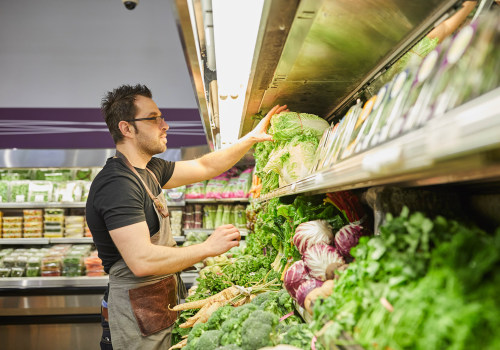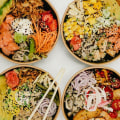The restaurant industry is a highly competitive and populated sector, and entrepreneurs must be creative to achieve sustainable growth for their businesses. At Vantage Market Research, we provide high-quality, quantified B2B research in more than 20,000 emerging markets, which in turn helps our clients chart a constellation of opportunities for their businesses. We, as a competitive intelligence, market research and consulting company, provide comprehensive solutions to our clients' companies to meet their crucial business objectives. Our client base encompasses 70% of global Fortune 500 companies. The company provides high-quality market research data and services.
The company provides services to diverse businesses and customers in a wide variety of industries. The company provides detailed reports on multiple industries, including chemical materials and energy, food and beverages, health technology, and more. The company's experienced team of analysts, researchers and consultants uses patented data sources and numerous statistical tools and techniques to collect and analyze information. The restaurant industry is highly competitive and operates on notoriously tight margins. Success or failure may depend on your ability to develop competitive advantages and offer your customers something they can't get from your competitors.
Competitive advantages in the restaurant industry are sometimes based on offering real value, such as higher quality foods or sustainably sourced ingredients. Alternatively, a competitive advantage may come from their ability to stand out in the minds of customers as a result of superior marketing strategies. In business, the definition of a competitor is any company in the same industry that offers similar products and services and serves the same market. In the case of restaurants, a competitor is any company that sells food to the same target market. Competitors can be divided into direct and indirect competition. The restaurant industry is highly competitive.
Unless you have a star chef or a new kitchen, chances are you'll have trouble standing out from the crowd. To gain a competitive advantage, a detailed analysis of the demographics of the surrounding area and the nature of existing competitors is required. And even if you're successful at first, new competitors could enter your market at any time to steal customers from you. Don't hesitate to adopt successful strategies from your competitors, but understand that competing directly with an ingrained rival is a bad idea for a beginning restaurateur. Sponsored content is a special paid section where companies in the industry offer high-quality, objective and non-commercial content on topics of interest to the food engineering public.
The sister magazine, Control Solutions, covered all areas of manufacturing, not only food and beverages, but also automotive, oil and gas, pulp and paper, etc. Your restaurant must offer a service that nearby competition cannot match, such as new, higher quality food or faster service. In the PLEX study, a third of the respondents come from food and beverages, and there are some surprising revelations, says Kaitlin Rebella, senior manager of PLEX. Several studies have shown that due to the confinement effort foot traffic to fast-food and casual dining restaurants decreased by 49% and 61%, respectively. Effectively training your staff will provide your restaurant with competitive strength as knowledgeable and efficient employees provide customers with exceptional service that makes them want to return. When I started working in Food Engineering almost 15 years ago I was formerly the senior technical editor of a sister magazine at the now non-existent Chilton Publishing in the suburbs of Philadelphia.
The additional segmentation is carried out according to the type of food service in food service for independent consumption and food service for chained consumers. Offering lower prices than the competition may attract consumers but don't compromise the quality of your food and service. Restaurateurs with great ideals for serving good food often find themselves making compromises when faced with the daily challenges of keeping ingredients fresh and keeping costs low. Other restaurants are obvious rivals but grocery stores convenience stores and any other business that sells prepared foods are also competitors. Therefore the enormous growth of online food ordering platforms is increasing the growth of the foodservice market during the projected year. The increasing digitalization of food services is one of the main factors driving the market as consumers find it convenient to book in advance and make payments online.
The report provides the market size and forecasts for the US foodservice market in value (billion USD) for all of the above segments. Restaurants offer ongoing opportunities to source and prepare food sustainably from choosing local and organic ingredients to avoiding genetically modified foods composting food waste and leftovers to using compostable and recyclable packaging.









